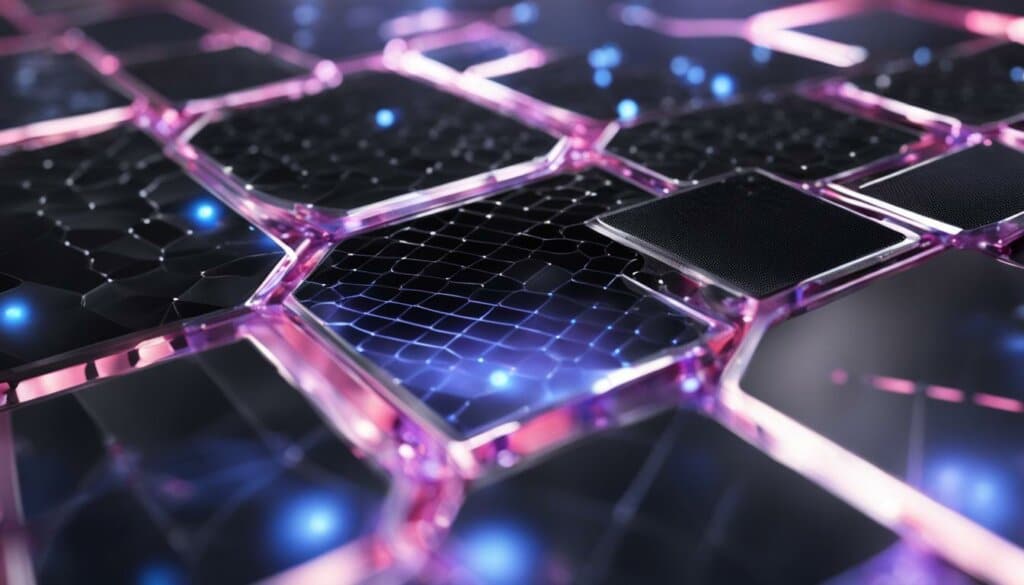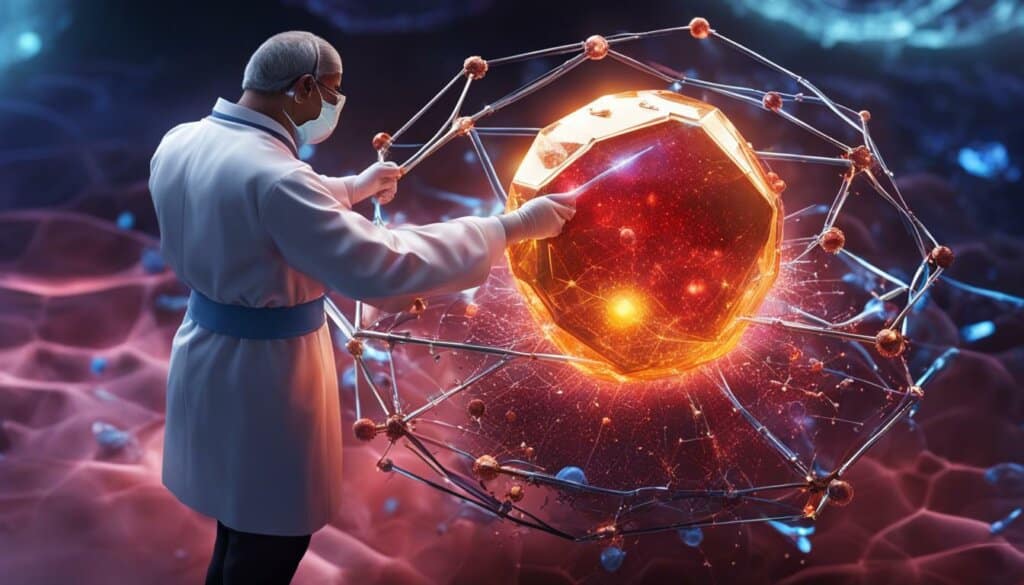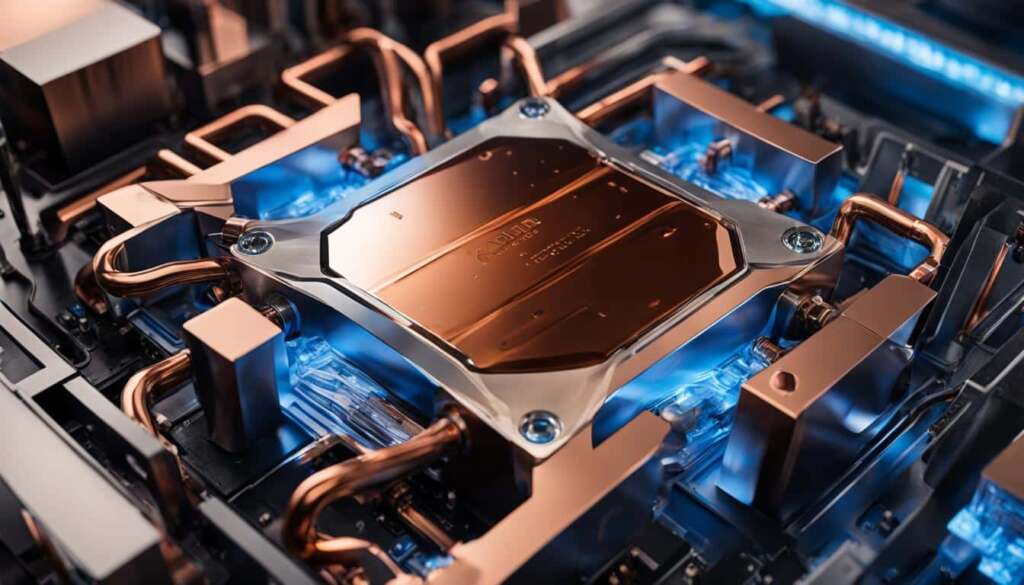Table of Contents
Graphene, a remarkable material with immense potential in various sectors, is widely known as the “material of the future.” Unlike graphite, graphene stands out for its toughness, flexibility, lightness, and high resistance. With properties like high thermal and electrical conductivity, elasticity, lightness, and resistance, graphene has endless applications in energy, construction, health, and electronics sectors.
It can increase the lifespan of batteries, manufacture lightweight batteries for drones, create flexible screens, improve the lighting sector with graphene light bulbs, enhance the thermal regulation of homes, and revolutionize the renewable energy sector. It also has promising applications in the health and medicine sectors, such as developing better hearing aids and aiding in disease diagnosis and treatment.
Graphene has the potential to revolutionize the electronics industry by manufacturing smaller, lighter, and more efficient devices. Its exceptional properties make it a game-changer in various sectors and pave the way for future innovations.
Understanding what Graphene is
Graphene is a remarkable material that has gained significant attention in recent years for its unique properties and potential applications. It is a one-atom-thick layer of carbon atoms arranged in a hexagonal lattice, making it the thinnest and strongest material known to man. With a strength 200 times greater than that of steel, graphene exhibits exceptional mechanical properties. Additionally, it is an excellent conductor of heat and electricity, surpassing even copper in conductivity by 1,000 times.
Graphene’s conductivity and strength are not the only impressive characteristics it possesses. It also demonstrates high resistance and flexibility, allowing it to be stretched and bent without losing its conductivity. These properties, combined with its lightness, make graphene an ideal material for various applications in industries such as electronics, energy, medicine, and construction.
The outstanding properties of graphene make it an attractive material for innovation and integration into various industries. Its high conductivity enables the manufacturing of smaller, lighter, and more efficient electronic devices. Its flexibility and durability contribute to the production of flexible screens and wearable electronics. In the energy sector, graphene can revolutionize solar cells, batteries, and nuclear power plants. In medicine, it has the potential to improve drug delivery systems, cancer treatments, and gene delivery. Lastly, in the construction industry, graphene can enhance insulation and corrosion resistance properties of buildings, making them more sustainable and durable.
Overall, graphene’s extraordinary properties make it a material with unlimited potential for various applications. Its conductivity, resistance, flexibility, and strength set it apart from other materials, opening up a world of possibilities for technological advancements and innovations. As researchers and scientists continue to explore the potential of graphene, we can expect to see even more remarkable applications in the future.
Diverse Applications of Graphene
Graphene, with its exceptional properties, has a wide range of potential applications across various industries. Its unique combination of strength, conductivity, and flexibility allows for groundbreaking innovations in electronics, construction, health, energy, and more. Let’s explore some of the diverse applications of graphene in these industries.
Graphene in Electronics
Graphene’s exceptional conductivity makes it a game-changer in the electronics industry. It enables the production of smaller, lighter, and more efficient electronic devices. Graphene-based electronic circuits offer improved durability and resistance to dampness, leading to longer lifespan and enhanced performance. Additionally, graphene’s thermal management properties make it an ideal material for heat dissipation in electronic devices, ensuring efficient and reliable operation.
Graphene in Construction
Graphene has the potential to revolutionize the construction industry by improving sustainability and durability. By incorporating graphene into construction materials, such as concrete, it enhances their insulation properties, leading to better thermal regulation and energy efficiency in buildings. Graphene also improves the corrosion resistance of construction materials, making them more resistant to environmental factors such as dampness and fire.
Graphene in Health
In the health and medical field, graphene opens up new possibilities for drug delivery, diagnostics, and treatments. Graphene-based drug delivery systems offer targeted and efficient delivery of medications, reducing side effects and improving treatment outcomes. Graphene’s unique properties also make it a promising material for biosensors, enabling real-time disease detection and monitoring. Furthermore, graphene-based devices have the potential to revolutionize medical imaging and improve diagnostic accuracy.
Graphene in Energy
Graphene’s high conductivity and versatility make it a valuable material for the energy industry. It can be used in solar cells to develop lightweight, flexible, and transparent cells that can be integrated into various surfaces. Graphene-enhanced lithium-ion batteries show increased capacity, faster charging time, and longer lifespan, revolutionizing energy storage. Additionally, graphene’s thermal properties can enhance the efficiency of thermoelectric systems, utilizing waste heat generated by engines.
| Industry | Applications |
|---|---|
| Electronics | Smaller, lighter, and more efficient devices |
| Construction | Improved insulation and durability |
| Health | Targeted drug delivery and diagnostic devices |
| Energy | Solar cells, batteries, and thermoelectric systems |
Graphene’s exceptional properties and versatility make it a material with endless potential for innovation in electronics, construction, health, energy, and many other industries. As research and development continue, we can expect even more groundbreaking applications of graphene in the future, transforming various sectors and shaping the technological landscape.

Graphene in the Energy Industry: A Game-Changer
The integration of graphene into the energy industry has the potential to revolutionize various sectors, including solar cells, batteries, nuclear power plants, and thermoelectric systems. Graphene’s remarkable properties make it an ideal material for enhancing energy technologies, leading to more efficient and sustainable solutions.
In the field of solar cells, graphene offers the opportunity to develop lighter, flexible, and transparent cells that can be installed on various surfaces. These graphene-based solar cells have the potential to increase energy conversion efficiency and revolutionize the way we harness solar power. Additionally, graphene-enhanced lithium-ion batteries have shown improved performance, including increased lifespan, higher capacity, faster charging times, and enhanced flexibility. These advancements in battery technology have significant implications for the electric vehicle industry and portable electronic devices.
| Graphene in Energy Industry | Applications |
|---|---|
| Solar Cells | Lightweight, flexible, transparent cells |
| Batteries | Improved performance, increased lifespan, higher capacity, faster charging times |
| Nuclear Power Plants | Efficient production of heavy water |
| Thermoelectric Systems | Enhanced Seebeck effect, utilization of waste heat |
Furthermore, graphene membranes can be utilized in nuclear power plants to produce heavy water more efficiently and in a more environmentally friendly way. This application has the potential to significantly impact the nuclear energy sector, improving safety and reducing the environmental impact of power generation.
Graphene’s exceptional thermal properties also make it suitable for enhancing thermoelectric systems. By increasing the Seebeck effect and utilizing waste heat generated by engines, graphene can contribute to more efficient energy conversion, reducing energy wastage and improving overall system performance. This has implications for a wide range of applications, including automotive, aerospace, and industrial sectors.
Overall, the integration of graphene into the energy industry holds great promise for driving innovation and transforming the way we generate, store, and utilize energy. By leveraging graphene’s unique properties, we can create more efficient and sustainable energy solutions that will shape the future of our world.
Graphene in Medicine: Transforming Healthcare
Graphene, with its exceptional properties, is revolutionizing the field of medicine, transforming healthcare in numerous ways. One of the key applications of graphene in medicine is drug delivery. Its unique structure allows for the creation of graphene-based carriers that can efficiently transport chemotherapy drugs to tumors, leading to targeted and more effective treatment. These carriers have shown improved targeting of cancer cells, reducing damage to healthy cells and minimizing side effects. The use of graphene in drug delivery holds great promise for enhancing the effectiveness of cancer treatments and improving patient outcomes.
In addition to drug delivery, graphene is also being explored for its potential in gene delivery. By introducing foreign DNA into cells, graphene-based carriers have the potential to treat genetic diseases and gene disorders. This exciting area of research has the potential to revolutionize the field of gene therapy and offer new treatments for a wide range of debilitating conditions.
Another area where graphene is making a significant impact in medicine is in the field of photothermal therapy. Graphene’s unique photothermal properties make it ideal for targeting and eliminating abnormal cells in the body. By harnessing the heat generated by graphene, photothermal therapy offers a non-invasive and targeted approach for treating conditions such as cancer. This innovative therapy has the potential to improve patient outcomes and reduce the side effects associated with traditional treatment methods.
Graphene’s versatility and exceptional properties make it a transformative material in medicine, offering new possibilities for drug delivery, gene therapy, and photothermal therapy. As researchers continue to explore its potential, we can expect to see further advancements and innovations in healthcare.

Table: Applications of Graphene in Medicine
| Application | Benefits |
|---|---|
| Drug Delivery | Targeted and efficient delivery of chemotherapy drugs to tumors |
| Gene Delivery | Treatment of genetic diseases and gene disorders |
| Photothermal Therapy | Non-invasive and targeted treatment for cancer and other conditions |
Table: This table highlights the various applications of graphene in medicine, showcasing the benefits of each application. From drug delivery to gene therapy and photothermal therapy, graphene offers new possibilities for improving treatments and patient outcomes.
Graphene in Electronics: Revolutionizing the Tech Industry
Graphene, with its remarkable properties, is set to revolutionize the tech industry, offering smaller, lighter, and more efficient electronic devices. As an exceptional conductor of electricity, graphene possesses conductivity 1,000 times better than copper, making it a game-changer in the field of electronics. Its high flexibility and durability enable the manufacturing of flexible screens that reduce the chances of breakage, providing a solution to the common problem of fragile displays. Graphene also exhibits excellent thermal management properties, making it suitable for heat dissipation in electronic devices. This ensures optimal performance and extends the lifespan of electronics.
Due to its exceptional properties, graphene has already found its way into various electronic applications. The integration of graphene into electronic circuits can make devices immune to dampness, improving their durability, and extending their lifespan. This breakthrough technology opens up endless possibilities for the development of more robust and reliable electronic devices that were previously impossible to obtain with traditional components. Graphene’s incredible conductivity, coupled with its flexibility and durability, marks a significant leap forward in the tech industry.
Graphene is the material that will drive the next generation of electronics. Its unique combination of properties, including high conductivity, flexibility, and heat dissipation, makes it ideal for creating smaller, lighter, and more energy-efficient devices. It has the potential to transform the way we interact with technology, revolutionizing consumer electronics, mobile devices, and more. The future of electronics is graphene-powered.
The Potential Application of Graphene in Wearable Devices
One area where graphene is expected to have a significant impact is in the development of wearable devices. With its exceptional conductivity, flexibility, and durability, graphene can be incorporated into wearable technology to create more comfortable and efficient devices. For example, graphene-based sensors can be used to monitor vital signs, such as heart rate and body temperature, providing real-time feedback and enhancing the accuracy of health tracking. Furthermore, the lightweight and flexible nature of graphene make it ideal for the production of wearable displays, enabling the creation of lightweight and flexible screens that can be seamlessly integrated into clothing or accessories.
As the tech industry continues to advance, graphene’s unique properties will continue to drive innovation and shape the future of electronics. Whether it’s in the form of smaller, lighter, and more efficient devices or the development of wearable technology, graphene is set to revolutionize the way we interact with technology. The possibilities are endless, and the tech industry is poised to embrace the transformative power of graphene.
A Comparison of Graphene and Traditional Electronic Components
| Property | Graphene | Traditional Components |
|---|---|---|
| Conductivity | 1,000 times better than copper | Lower conductivity |
| Flexibility | High flexibility and durability | Less flexible |
| Heat Dissipation | Excellent thermal management properties | Less efficient heat dissipation |
| Size | Smaller and lighter devices | Relatively larger and heavier devices |
Graphene in Construction: Improving Sustainability and Durability
Graphene is making waves in the construction industry, offering a range of benefits that improve sustainability and durability. One of the key applications of graphene in construction is enhancing insulation properties in buildings. By incorporating graphene into insulation materials, buildings can achieve better thermal regulation, leading to improved energy efficiency and reduced environmental impact. Additionally, graphene’s unique properties contribute to enhanced corrosion resistance in construction materials, making them more resilient to dampness, fire, and other environmental factors.

Building materials modified with graphene offer superior performance and longevity. Graphene-modified concrete, for example, displays increased strength and durability, making it an excellent choice for constructing sustainable and resilient structures. The integration of graphene into construction materials also aligns with efforts to create eco-friendly buildings, as graphene offers a more sustainable alternative to traditional materials.
Moreover, graphene’s lightweight nature makes it suitable for use in construction, reducing the overall weight of structures without compromising their strength. This can have a positive impact by lowering transportation costs and reducing the carbon footprint associated with construction projects.
Key Applications of Graphene in Construction:
- Enhanced insulation for improved energy efficiency
- Superior corrosion resistance for increased durability
- Increased strength and longevity of building materials
- Eco-friendly construction with graphene-modified materials
- Reduced weight of structures for cost and energy savings
Table: Comparison of Graphene-Modified Construction Materials
| Material | Properties | Benefits |
|---|---|---|
| Graphene-modified concrete | Increased strength and durability | Longer lifespan, reduced maintenance |
| Graphene-infused insulation | Enhanced thermal regulation | Improved energy efficiency |
| Graphene-coated metals | Corrosion resistance | Protection against environmental factors |
| Graphene-based coatings | Waterproofing and fire resistance | Enhanced safety and longevity |
By harnessing the potential of graphene in construction, we can create buildings that are not only more sustainable but also more resilient and efficient. With ongoing research and development, graphene is expected to play an increasingly vital role in shaping the future of the construction industry.
Graphene in Other Industries: Endless Possibilities
Graphene’s applications extend beyond the energy, medicine, and electronics industries. Its exceptional properties make it a versatile material with endless possibilities in various sectors. One such sector is the field of sensors, where graphene can revolutionize real-time detection of small molecules. With its high conductivity and sensitivity, graphene-based sensors offer faster sample processing and greater accuracy in detecting substances.
In the sports industry, graphene is making waves by enhancing the performance and durability of equipment. Tennis rackets, helmets, and ski gear incorporating graphene offer improved strength and flexibility, leading to better performance and increased durability. Athletes can benefit from lighter and more resilient equipment that helps them push their limits and achieve greater success.
Consumer electronics companies are also turning to graphene for heat management purposes. Smartphones and other electronic devices generate heat during operation, and graphene’s exceptional thermal conductivity can dissipate heat effectively, preventing overheating and ensuring optimal performance. Graphene-based heat management solutions in consumer electronics contribute to longer device lifespan and better user experience.
With its endless possibilities, graphene continues to inspire innovation across various industries, from sensors and sports equipment to consumer electronics. Its unique properties open up new avenues for technological advancement and product improvement. Whether it’s creating more sensitive sensors, enhancing sports equipment, or improving heat management in electronic devices, graphene is driving innovation and shaping the future of countless industries.
| Industry | Graphene Applications |
|---|---|
| Sensors | Real-time detection of small molecules |
| Sports | Enhanced performance and durability of equipment |
| Consumer Electronics | Heat management for optimal device performance |
Conclusion
Graphene is a transformative material with immense potential in various sectors. Its unique properties make it a game-changer in technology, energy, medicine, construction, and many other industries. From improving the efficiency and durability of electronic devices to revolutionizing the energy industry with better batteries and solar cells, graphene offers endless possibilities for innovation.
In the field of medicine, graphene’s applications hold promise for improved diagnostics, drug delivery, and cancer treatments. Its exceptional properties, such as high conductivity and flexibility, enable targeted drug delivery and more efficient treatment methods. Additionally, in the construction industry, graphene offers the potential to enhance the sustainability and durability of buildings. By improving insulation and corrosion resistance, graphene can contribute to more energy-efficient and resilient structures.
Looking to the future, graphene’s versatility and exceptional properties position it as the material of the future. Its transformative impact on technology and society is only just beginning, and the possibilities are limitless. As researchers continue to explore its applications and refine its production techniques, we can expect further advancements and innovations across multiple sectors. Graphene truly represents a new era of materials science and technology.
With ongoing research and development, graphene is set to revolutionize various industries, shaping the future of technology, energy, medicine, and more. The potential of this remarkable material is vast, and as scientists and innovators continue to unlock its capabilities, we can anticipate even more exciting applications and breakthroughs in the years to come.
FAQ
What is graphene?
Graphene is a one-atom-thick layer of carbon atoms arranged in a hexagonal lattice. It is incredibly thin yet remarkably strong, with a strength 200 times greater than that of steel.
What are the properties of graphene?
Graphene has excellent conductivity, resistance, flexibility, and lightness. It is an exceptional conductor of heat and electricity, making it suitable for various applications.
What are the applications of graphene?
Graphene has endless possibilities in industries such as electronics, energy, construction, health, and more. It can be used in solar cells, batteries, drug delivery systems, and even sports equipment.
How can graphene revolutionize the energy industry?
Graphene can be used in solar cells, batteries, nuclear power plants, and thermoelectric systems to provide more efficient and sustainable energy solutions.
How does graphene transform healthcare?
Graphene has applications in drug delivery, cancer treatment, gene delivery, and photothermal therapy, improving diagnostics, treatments, and overall patient care.
How does graphene revolutionize the tech industry?
Graphene’s exceptional properties make it suitable for manufacturing smaller, lighter, and more efficient electronic devices with improved conductivity, flexibility, and durability.
How can graphene improve sustainability and durability in the construction industry?
Graphene can enhance insulation properties and corrosion resistance in buildings, leading to better thermal regulation, energy efficiency, and eco-friendly construction materials.
What are the other applications of graphene?
Graphene has various applications in industries such as sensors, sports equipment, consumer electronics, and more, offering improved performance and durability.
What is the future of graphene?
Graphene is a transformative material with immense potential. Its exceptional properties and endless applications pave the way for advancements, innovations, and a more sustainable future.
Source Links
- https://www.repsol.com/en/energy-and-the-future/technology-and-innovation/graphene/index.cshtml
- https://www.graphene-info.com/graphene-introduction
- https://nanografi.com/blog/60-uses-and-applications-of-graphene-nanografi-/













